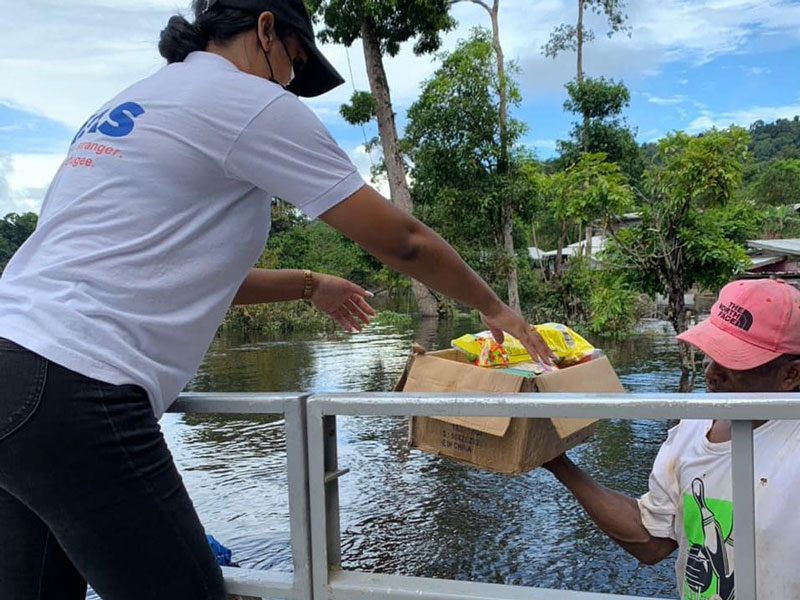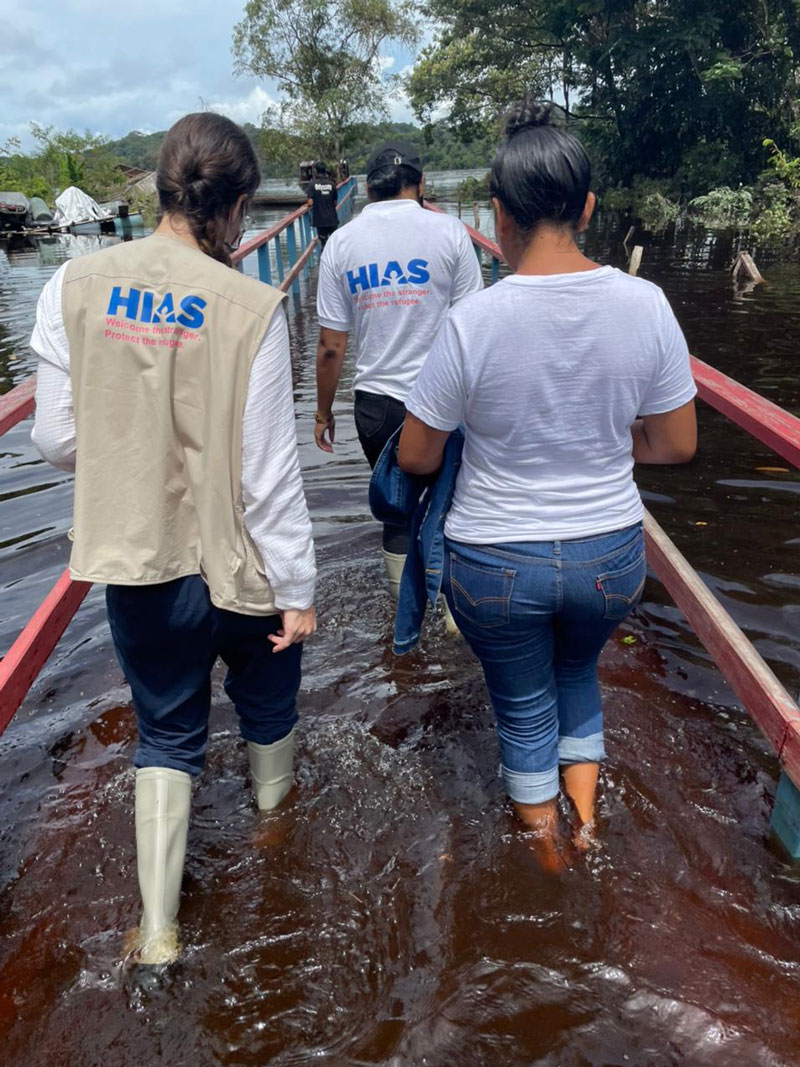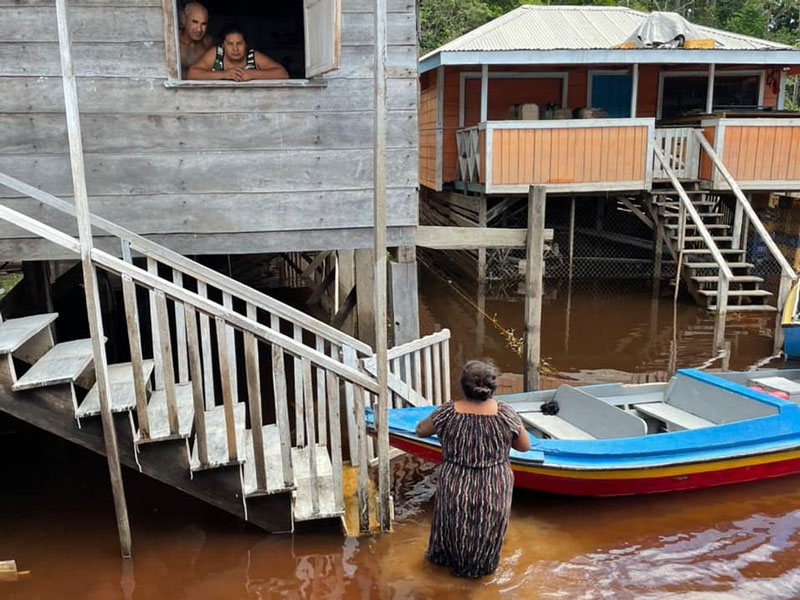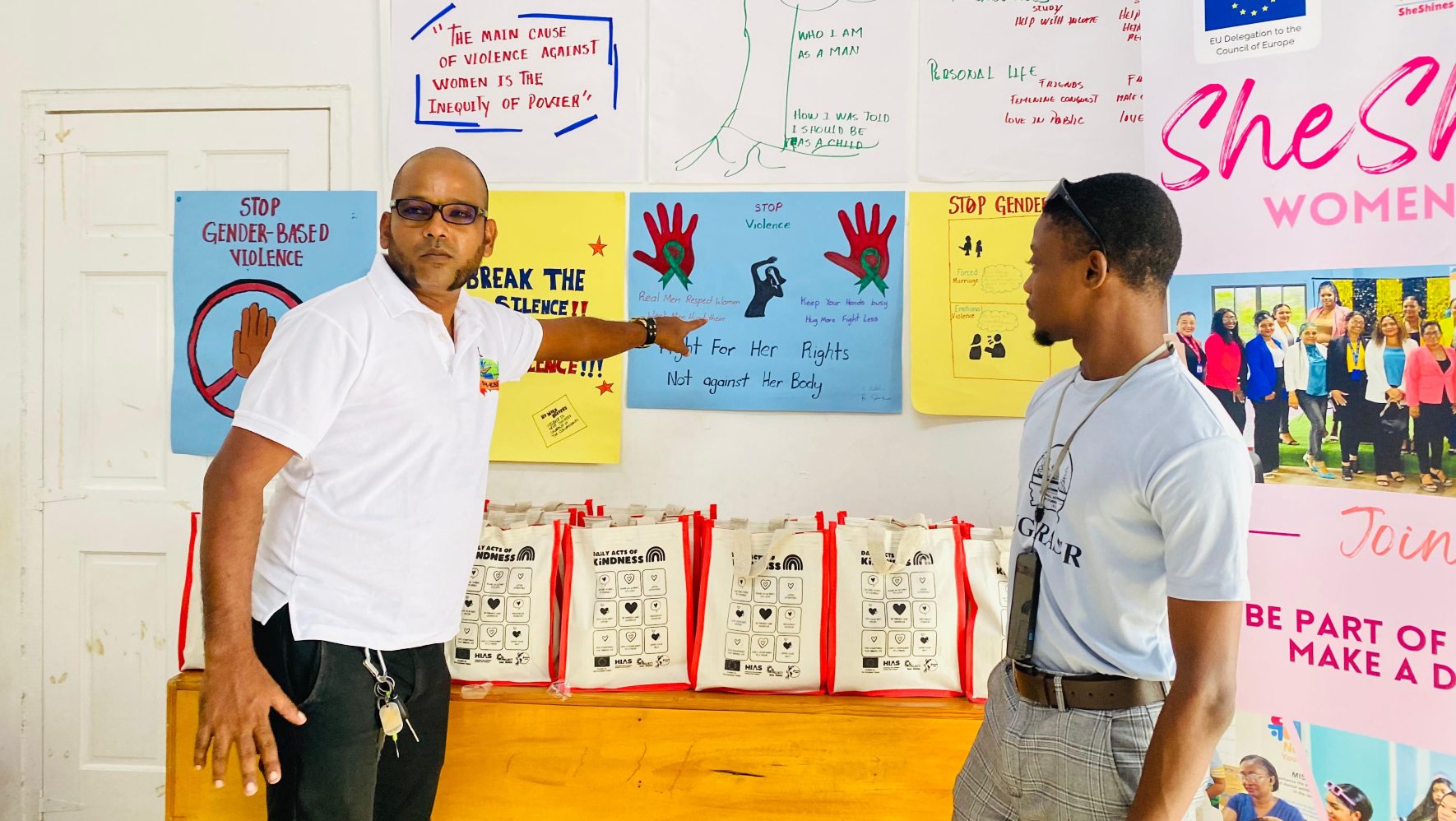Bringing Hope to Flood Ravaged Villages in Guyana
By Sharon Samber, HIAS.org
Aug 11, 2021
With spring comes rain, but in Guyana — as in many parts of the world this year — the rain came in extreme amounts.
Floods hit many remote villages in May and June, and in some places the heavy rain continued even into July. People had to move to higher ground and some, knowing that HIAS Guyana works in the area, contacted them for help.
HIAS mobilized internal emergency response fund resources to conduct a rapid needs assessment and then distributed relief items. Already coordinating with the government about the floods, HIAS Guyana prepared to evaluate the situation around the city of Bartica and also to head out to the hinterland, to areas with little or no connection to the cities and are mainly inhabited by indigenous peoples.
“Water just covered everything,” said Lyn Morales, HIAS Guyana’s protection officer. “The people weren’t expecting it and they woke up and stepped in water. There was no way to prepare.” The last major flooding in the area was in 2006.
To evaluate and document the impact of the inland floods in Cuyuni-Mazaruni, or Region 7, HIAS Guyana staff went on a three-day trip in mid-June to see the extent of the damage. They were able to visit and support several villages assisting about 300 households by distributing food and potable water, vital hygiene items such as soap and sanitary pads, and tarpaulins for shelter.
HIAS Guyana returned a week later to carry out another post-flood outreach. In collaboration with the Bartica Hospital and Hope Foundation they provided solar lamps and COVID-19 vaccines along with malaria testing and treatment to nine villages, reaching over a hundred households. HIAS also used the opportunity to provide information to villagers and community leaders on gender-based violence, menstrual health, and general services.
Many people were forced to relocate from the villages to mining areas for work, since their main jobs of farming and fishing were devastated by the floods. Those whose houses were destroyed or partially ruined by the floods are trying to salvage and rebuild because permanent relocation is not easy.
“The host community was also affected by the floods, so we provided relief to those affected families as well,” said Andrea Ortiz, HIAS Guyana’s program manager. “We recognize the importance of including host communities in emergency responses and we are committed to strengthening the social fabric between refugees and their host communities.”
HIAS Guyana continues to be in contact with the villages and is sharing water treatment information, trying to prepare people for the potential of future flooding.






